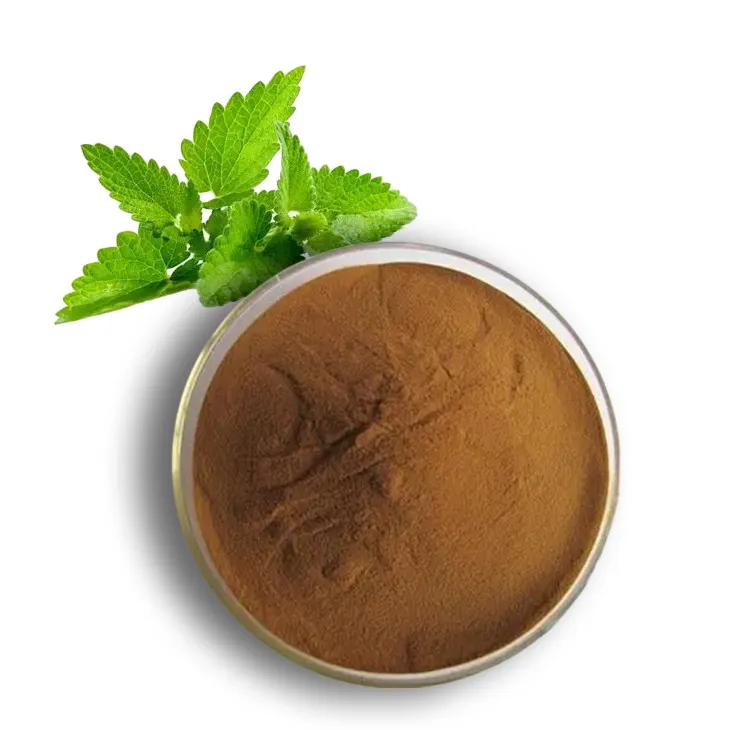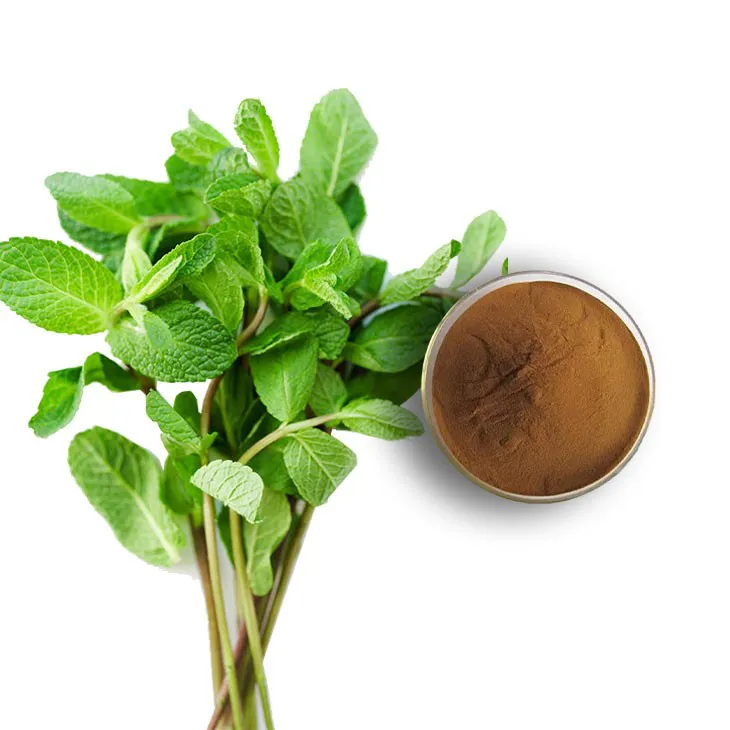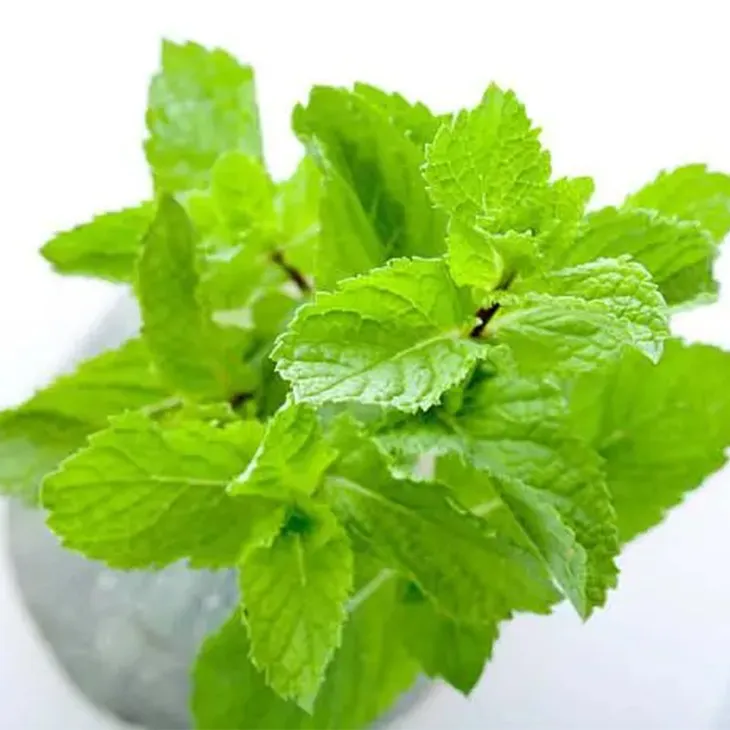- 0086-571-85302990
- sales@greenskybio.com
How to make powder with peppermint extract powder.
2024-11-30

1. Introduction to Peppermint Extract Powder
Peppermint Extract Powder is a wonderful ingredient that has a wide range of applications. It is derived from peppermint plants and contains the essence and flavors of peppermint. Peppermint itself is well - known for its refreshing and cooling properties, as well as its distinct aroma.
Before delving into the process of making powder from it, it is essential to understand its characteristics. Peppermint Extract Powder is often used in the food and beverage industry, in cosmetics, and in some pharmaceutical products. In the food industry, it can be added to candies, baked goods, and beverages to impart a minty flavor. In cosmetics, it can provide a cooling sensation on the skin, and in pharmaceuticals, it may have some soothing properties.

2. Spray - Drying Technology
One of the most common methods to transform peppermint extract powder into a more refined powder form is through spray - drying technology.
2.1 The Principle of Spray - Drying
Spray - drying involves atomizing the peppermint extract (which may be in a liquid or semi - liquid form) into a fine mist. This is typically done using a specialized nozzle. The mist is then introduced into a drying chamber where hot air is circulated. The hot air rapidly evaporates the moisture from the droplets of the extract, leaving behind solid particles of the peppermint extract powder.
2.2 Equipment Needed
- Spray - Dryer: This is the core equipment. There are different types and sizes available in the market, depending on the scale of production. A small - scale spray - dryer may be suitable for home - based or small - batch production, while larger industrial - scale ones are used for mass production. - Atomizer: As mentioned earlier, the atomizer is crucial for creating the fine mist of the peppermint extract. There are different types of atomizers, such as pressure - based atomizers or rotary atomizers. - Heating System: To provide the hot air required for drying. This needs to be carefully controlled to ensure the proper drying of the extract without overheating, which could damage the quality of the final powder.
2.3 Operational Steps
- Prepare the peppermint extract. Make sure it is in the appropriate form, whether it is a pure liquid extract or a diluted form. If it is too thick, it may need to be thinned slightly to ensure proper atomization.
- Set up the spray - dryer. Adjust the settings according to the manufacturer's instructions. This includes setting the temperature of the hot air, the flow rate of the extract, and the speed of the atomizer.
- Start the atomization process. As the extract is sprayed into the drying chamber, closely monitor the process. Look for signs of proper drying, such as the formation of fine powder particles and the absence of wet or sticky areas in the drying chamber.
- Collect the dried powder. Once the drying process is complete, the powder can be collected from the collection system of the spray - dryer. It is important to handle the powder carefully at this stage to avoid any contamination.

3. Other Methods of Powder Formation
While spray - drying is a popular method, there are other ways to make powder from peppermint extract powder as well.
3.1 Freeze - Drying
- Principle: Freeze - drying, also known as lyophilization, involves freezing the peppermint extract powder first. Then, under a vacuum, the ice crystals in the frozen sample are removed by sublimation. Sublimation is the process where ice changes directly from a solid to a gas without going through the liquid phase. This leaves behind a dry powder. - Advantages: Freeze - drying can preserve the volatile components of the peppermint extract better than some other drying methods. It can also result in a powder with a more porous structure, which may be beneficial for certain applications, such as in the formulation of fast - dissolving products. - Disadvantages: It is a relatively slow process compared to spray - drying and requires more complex and expensive equipment.
3.2 Vacuum Drying
- Principle: In vacuum drying, the peppermint extract powder is placed in a vacuum chamber. The reduced pressure in the chamber lowers the boiling point of the moisture in the extract, allowing it to evaporate more easily at a lower temperature. This helps to preserve the quality of the extract while drying it into a powder. - Advantages: It can be a more gentle drying method compared to some traditional drying methods that use high heat. This can be important for maintaining the integrity of the peppermint extract, especially if it contains heat - sensitive components. - Disadvantages: Similar to freeze - drying, it may be slower than spray - drying and requires specific equipment for creating and maintaining the vacuum.

4. Safety Measures during Production
When working with peppermint extract powder during the powder - making process, several safety measures need to be observed.
- Handling of Equipment: Ensure that all equipment used, such as the spray - dryer, atomizer, and heating systems, are in proper working condition. Regular maintenance and inspection are necessary to prevent any malfunctions that could lead to accidents. For example, a faulty heating system could cause overheating and potentially start a fire. - Protection from Inhalation: Peppermint extract powder can be fine and easily inhalable. Prolonged or excessive inhalation of the powder can irritate the respiratory system. Therefore, it is advisable to use proper respiratory protection, such as masks or respirators, especially in an industrial - scale production environment. - Avoiding Contamination: Keep the production area clean and free from any contaminants. This includes ensuring that the peppermint extract powder does not come into contact with other substances that could affect its quality or safety. Store raw materials and finished products separately and in appropriate containers.
5. Quality Testing of the Final Powder Product
After the powder has been produced, it is crucial to test its quality to ensure that it meets the desired standards.
5.1 Physical Properties Testing
- Particle Size Analysis: The particle size of the peppermint extract powder can affect its solubility, flowability, and overall performance in various applications. There are different methods for particle size analysis, such as sieving, laser diffraction, or microscopy. By determining the particle size distribution, one can ensure that the powder has the appropriate characteristics for its intended use. - Bulk Density Measurement: Bulk density is the mass of a powder per unit volume. Measuring the bulk density can give an indication of how the powder will behave during packaging, storage, and handling. A powder with a high bulk density may pack more tightly, while a powder with a low bulk density may be more fluffy and require different packaging considerations.
5.2 Chemical and Sensory Testing
- Chemical Composition Analysis: This involves analyzing the chemical components of the peppermint extract powder. This can be done using techniques such as chromatography (e.g., high - performance liquid chromatography or gas chromatography) to determine the levels of active ingredients, such as menthol, in the powder. Ensuring the correct chemical composition is important for the product's functionality and safety. - Sensory Evaluation: The taste, aroma, and overall sensory characteristics of the powder are also important. A panel of trained tasters can be used to evaluate the minty flavor, intensity, and any off - flavors in the powder. The aroma can be evaluated using sensory techniques such as sniffing tests. These evaluations help to ensure that the powder has the desired sensory qualities for its intended use in food, beverage, or cosmetic products.
6. Conclusion
Making powder from peppermint extract powder can be achieved through various methods, each with its own advantages and disadvantages. Whether using spray - drying technology, freeze - drying, or vacuum drying, it is important to consider factors such as the quality of the final product, production efficiency, and cost. Additionally, safety measures during production and quality testing of the final powder product are essential steps to ensure that the peppermint extract powder produced is of high quality and suitable for its intended applications in the food, beverage, cosmetic, or pharmaceutical industries.
FAQ:
What are the main steps to make powder with peppermint extract powder?
One of the main methods is using spray - drying technology. First, you need to ensure the peppermint extract powder is in a suitable form for the process. Then, the spray - drying machine will quickly convert the liquid - based extract into powder form. However, it's important to note that during this process, safety measures should be strictly adhered to as peppermint extract can be sensitive to certain conditions.
Why is safety important when making powder from peppermint extract powder?
Peppermint extract can be sensitive to certain conditions such as temperature, humidity, and exposure to certain chemicals. Incorrect handling during the powder - making process can lead to spoilage of the product, loss of its beneficial properties, or even potential hazards. For example, if the temperature is not properly controlled during spray - drying, it may affect the quality of the final powder.
What are the tips for testing the quality of the final powder product?
There are several ways to test the quality. One can check the appearance, for example, a high - quality powder should be fine and evenly textured. The smell should also be characteristic of peppermint, without any off - odors. Another aspect is solubility. A good peppermint extract powder should dissolve relatively easily in suitable solvents. Additionally, chemical analysis can be done to check the concentration of the active ingredients in the powder.
Are there any alternative methods to make powder from peppermint extract powder?
Besides spray - drying technology, freeze - drying can also be considered in some cases. Freeze - drying involves freezing the peppermint extract and then removing the moisture in a vacuum. This method can be more suitable for preserving certain volatile components in the extract. However, it may be more expensive and time - consuming compared to spray - drying.
What are the potential uses of the powder made from peppermint extract powder?
The powder can be used in various industries. In the food industry, it can be used as a flavoring agent in products like candies, baked goods, and beverages. In the pharmaceutical and cosmetic industries, it may be used for its cooling and soothing properties. For example, it can be an ingredient in lip balms, skin creams, or herbal remedies.
Related literature
- Peppermint Extract: Properties and Applications"
- "Advanced Powder - Making Technologies for Herbal Extracts"
- "Quality Control in Peppermint - Based Powder Production"
- ▶ Hesperidin
- ▶ Citrus Bioflavonoids
- ▶ Plant Extract
- ▶ lycopene
- ▶ Diosmin
- ▶ Grape seed extract
- ▶ Sea buckthorn Juice Powder
- ▶ Fruit Juice Powder
- ▶ Hops Extract
- ▶ Artichoke Extract
- ▶ Mushroom extract
- ▶ Astaxanthin
- ▶ Green Tea Extract
- ▶ Curcumin
- ▶ Horse Chestnut Extract
- ▶ Other Product
- ▶ Boswellia Serrata Extract
- ▶ Resveratrol
- ▶ Marigold Extract
- ▶ Grape Leaf Extract
- ▶ New Product
- ▶ Aminolevulinic acid
- ▶ Cranberry Extract
- ▶ Red Yeast Rice
- ▶ Red Wine Extract
-
Baicalin
2024-11-30
-
Saw Palmetto Extract
2024-11-30
-
Peppermint Extract Powder
2024-11-30
-
Cactus Extract
2024-11-30
-
Lotus leaf extract
2024-11-30
-
Sophora Flavescens Root Extract
2024-11-30
-
Acai Berry Extract
2024-11-30
-
Nettle Root Extract
2024-11-30
-
Cat Claw Extract
2024-11-30
-
Bilberry Extract
2024-11-30




















